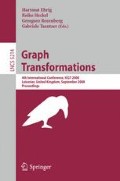Abstract
The international development partnership AUTOSAR strives for reuse and exchange of SW components along various dimensions: between OEM and supplier, between vehicle platforms, between electronic networks, and between individual electronic control units (ECUs). To enable the exchange an abstraction layer – the AUTOSAR runtime environment (RTE) – has been defined as a set of services provided to applications. Typical services are communication via buses, memory access, or diagnostic support. The services are implemented by several stacks of basic SW-modules being highly configurable to support the large variety of ECUs. By configuration, the same SW module can be used for those ECUs with a given micro-controller abstraction.
To exploit the variability in a structured approach, AUTOSAR defined a methodology which heavily makes use of so-called templates capturing all information of an electronic vehicle network. The data-structures are defined by a meta-model allowing for a consistent definition of the templates.
The development approach adopted by AUTOSAR is related to model-driven development. At the first step in the methodology, an overall system description is defined showing the logical architecture of the SW system. Each SW component is described by an instance of the SW-template. When the SW system shall be applied to an electronic network, the dedicated HW resources must be described as well. So, the properties and capabilities of ECUs and buses are captured by an ECU resource template. During the next step, a mapping of the logical to the physical architecture has to be found. This task is of high importance, since it determines the overall system performance. Once the mapping is established, configuration files for individual ECUs of the network are generated. Based on the configuration the appropriate SW-components can be loaded onto the ECU and the required communication channels are established such that the SW application can be successfully executed.
Currently, there is no strong tool-support for mapping besides plain editors. Rule-based transformations may be applied to define and realize (semi-) automatic mapping strategies for the different areas in the system and ECU resource template.
Access this chapter
Tax calculation will be finalised at checkout
Purchases are for personal use only
Author information
Authors and Affiliations
Editor information
Editors and Affiliations
Rights and permissions
Copyright information
© 2008 Springer-Verlag Berlin Heidelberg
About this paper
Cite this paper
Dörr, H. (2008). The AUTOSAR Way of Model-Based Engineering of Automotive Systems. In: Ehrig, H., Heckel, R., Rozenberg, G., Taentzer, G. (eds) Graph Transformations. ICGT 2008. Lecture Notes in Computer Science, vol 5214. Springer, Berlin, Heidelberg. https://doi.org/10.1007/978-3-540-87405-8_3
Download citation
DOI: https://doi.org/10.1007/978-3-540-87405-8_3
Publisher Name: Springer, Berlin, Heidelberg
Print ISBN: 978-3-540-87404-1
Online ISBN: 978-3-540-87405-8
eBook Packages: Computer ScienceComputer Science (R0)

